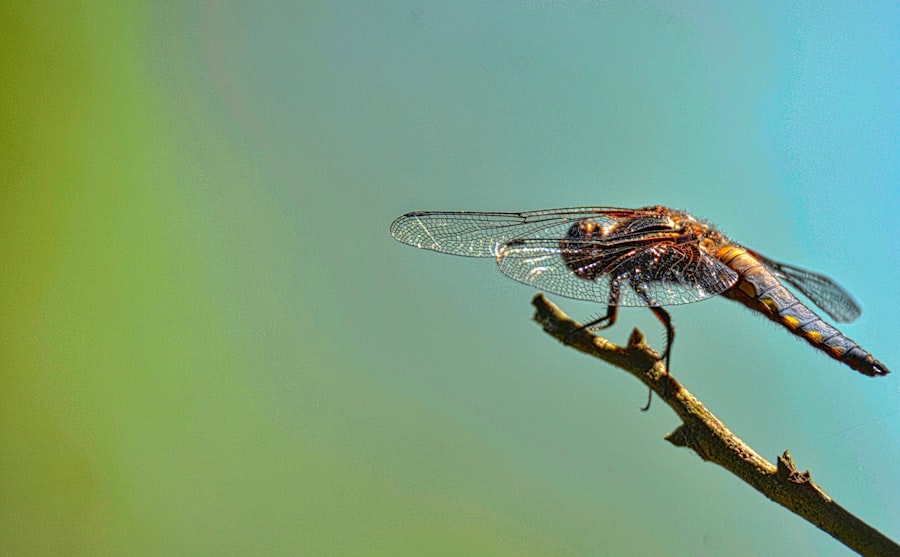The Role of Mosquito Traps in Disease Prevention: A Critical Analysis

Mosquito traps are devices designed to attract and capture mosquitoes, thereby reducing their population and preventing the spread of mosquito-borne diseases. These traps play a crucial role in disease prevention by targeting the vector responsible for transmitting diseases such as malaria, dengue fever, Zika virus, and West Nile virus. Mosquito control is essential in disease prevention as mosquitoes are responsible for transmitting some of the deadliest diseases worldwide.
Mosquito-Borne Diseases and Their Impact on Public Health
Mosquito-borne diseases are illnesses caused by pathogens transmitted to humans through the bite of infected mosquitoes. Some common mosquito-borne diseases include malaria, dengue fever, Zika virus, chikungunya, and West Nile virus. These diseases have a significant impact on public health, causing millions of infections and deaths each year.
Malaria, for example, is a life-threatening disease caused by the Plasmodium parasite and transmitted through the bite of infected female Anopheles mosquitoes. According to the World Health Organization (WHO), there were an estimated 229 million cases of malaria worldwide in 2019, resulting in approximately 409,000 deaths. Dengue fever is another major mosquito-borne disease, with an estimated 390 million infections occurring annually. Zika virus gained global attention in 2015-2016 due to its association with birth defects in babies born to infected mothers.
How Mosquito Traps Work: A Comprehensive Overview
Mosquito traps work by attracting mosquitoes using various mechanisms and then capturing them to prevent further reproduction and disease transmission. There are several types of mosquito traps available, each utilizing different techniques to lure and trap mosquitoes.
One common mechanism used in mosquito traps is the use of attractants such as carbon dioxide (CO2) and heat to mimic human breath and body heat, which are attractive to mosquitoes. Other attractants include chemicals that mimic human sweat or the scent of flowers, which can also lure mosquitoes towards the trap.
Once attracted, mosquitoes are captured using different methods. Some traps use a fan to suck in mosquitoes and trap them in a container, while others use sticky surfaces or electric grids to physically capture or kill the mosquitoes. The captured mosquitoes can then be disposed of or used for further analysis.
Types of Mosquito Traps: Pros and Cons
There are several types of mosquito traps available, each with its own advantages and disadvantages. Some common types include CO2 traps, UV light traps, sticky traps, and electric traps.
CO2 traps use carbon dioxide to attract mosquitoes, mimicking human breath. These traps are effective in attracting a wide range of mosquito species but may require a continuous supply of CO2, which can be costly. UV light traps use ultraviolet light to attract mosquitoes, and they are effective in attracting mosquitoes that are active during the night. However, these traps may also attract other insects and may not be as effective during the day.
Sticky traps use adhesive surfaces to capture mosquitoes. They are easy to use and do not require any power source, but they may not be as effective in capturing large numbers of mosquitoes. Electric traps use an electric grid to kill mosquitoes upon contact. These traps are effective in killing mosquitoes but may not capture them alive for further analysis.
Effectiveness of Mosquito Traps in Disease Prevention: Evidence-Based Analysis
Numerous research studies have been conducted to evaluate the effectiveness of mosquito traps in disease prevention. These studies have shown promising results, indicating that mosquito traps can significantly reduce mosquito populations and decrease the risk of disease transmission.
A study published in the journal PLOS ONE in 2014 evaluated the efficacy of different mosquito traps in reducing mosquito populations in a rural area of Tanzania. The study found that mosquito traps were highly effective in reducing the number of female Anopheles mosquitoes, which are responsible for transmitting malaria. Another study published in the Journal of Medical Entomology in 2017 compared the efficacy of different mosquito traps in capturing Aedes mosquitoes, which are responsible for transmitting dengue fever and Zika virus. The study found that certain types of mosquito traps were highly effective in capturing Aedes mosquitoes, reducing their population and the risk of disease transmission.
Comparisons between mosquito traps and other mosquito control methods have also been conducted. A study published in the journal Parasites & Vectors in 2018 compared the efficacy of mosquito traps with insecticide-treated bed nets, which are commonly used for malaria prevention. The study found that mosquito traps were as effective as bed nets in reducing mosquito populations and preventing malaria transmission.
Limitations of Mosquito Traps in Disease Prevention: Challenges and Solutions

While mosquito traps have shown promise in disease prevention, they do have some limitations that need to be addressed. Factors such as trap placement, weather conditions, and mosquito behavior can affect the efficacy of mosquito traps.
Trap placement is crucial for maximizing trap efficacy. Mosquitoes are more likely to be captured if the trap is placed in areas where they are abundant, such as near breeding sites or resting areas. Weather conditions, such as wind and temperature, can also affect trap efficacy. High winds can disperse attractants and make it difficult for mosquitoes to be captured, while low temperatures can reduce mosquito activity.
Mosquito behavior is another factor that can affect trap efficacy. Some mosquito species may not be attracted to certain types of traps or may avoid them altogether. Additionally, mosquitoes may develop resistance to certain attractants or become less responsive over time.
To overcome these limitations, researchers and manufacturers are continuously working on improving trap design and attractant formulations. Studies are being conducted to identify more effective attractants and optimize trap placement strategies. Additionally, advancements in technology have led to the development of smart traps that can monitor and adjust trap settings based on real-time mosquito activity.
Mosquito Traps vs. Other Mosquito Control Methods: Which is Better?
When it comes to mosquito control, there is no one-size-fits-all solution. Different methods have their own advantages and disadvantages, and the choice of method depends on various factors such as the target mosquito species, the local environment, and the resources available.
Insecticides are commonly used for mosquito control and can be effective in reducing mosquito populations. However, they may have negative impacts on human health and the environment. Repellents are another commonly used method for personal protection against mosquito bites. While effective in preventing mosquito bites, repellents do not target the mosquito population as a whole.
Mosquito traps offer a more targeted approach to mosquito control by specifically targeting and capturing mosquitoes. They can be used in combination with other methods for a more comprehensive approach to mosquito control.
Mosquito Traps in Integrated Vector Management: A Promising Approach
Integrated vector management (IVM) is a holistic approach to mosquito control that combines multiple methods to reduce vector populations and minimize the risk of disease transmission. Mosquito traps play a crucial role in IVM by targeting adult mosquitoes and reducing their population.
IVM involves a combination of methods such as source reduction (eliminating breeding sites), larviciding (treating breeding sites with larvicides), insecticide-treated bed nets, indoor residual spraying, and mosquito traps. By combining these methods, IVM aims to reduce vector populations at different stages of their life cycle and prevent disease transmission.
Mosquito traps can be strategically placed in areas where mosquitoes are abundant, such as near breeding sites or resting areas. They can complement other methods by targeting adult mosquitoes that may not be affected by larvicides or bed nets.
Mosquito Traps and Environmental Sustainability: A Holistic Perspective
When considering mosquito control methods, it is important to take into account their environmental impact and sustainability. Some methods, such as the use of insecticides, can have negative effects on non-target organisms and ecosystems.
Mosquito traps offer a more environmentally friendly approach to mosquito control. They do not rely on the use of chemicals and can specifically target mosquitoes without harming other organisms. Additionally, some traps are designed to capture mosquitoes alive, allowing for further analysis and research without causing harm to the captured mosquitoes.
Furthermore, mosquito traps can be used in conjunction with other environmentally friendly methods such as source reduction and biological control. Source reduction involves eliminating or modifying breeding sites to prevent mosquito reproduction, while biological control involves using natural predators or pathogens to control mosquito populations.
Conclusion and Future Directions for Mosquito Traps in Disease Prevention
In conclusion, mosquito traps play a crucial role in disease prevention by targeting the vector responsible for transmitting mosquito-borne diseases. They have shown promising results in reducing mosquito populations and decreasing the risk of disease transmission. However, there are still limitations that need to be addressed, such as trap efficacy and mosquito behavior.
Future research directions for mosquito traps in disease prevention include the development of more effective attractants, optimization of trap placement strategies, and advancements in trap design. Additionally, more studies are needed to evaluate the long-term effectiveness of mosquito traps and their impact on disease transmission.
Overall, mosquito traps offer a targeted and environmentally friendly approach to mosquito control. When used in combination with other methods as part of an integrated vector management approach, they can contribute to reducing the global burden of mosquito-borne diseases and improving public health.

